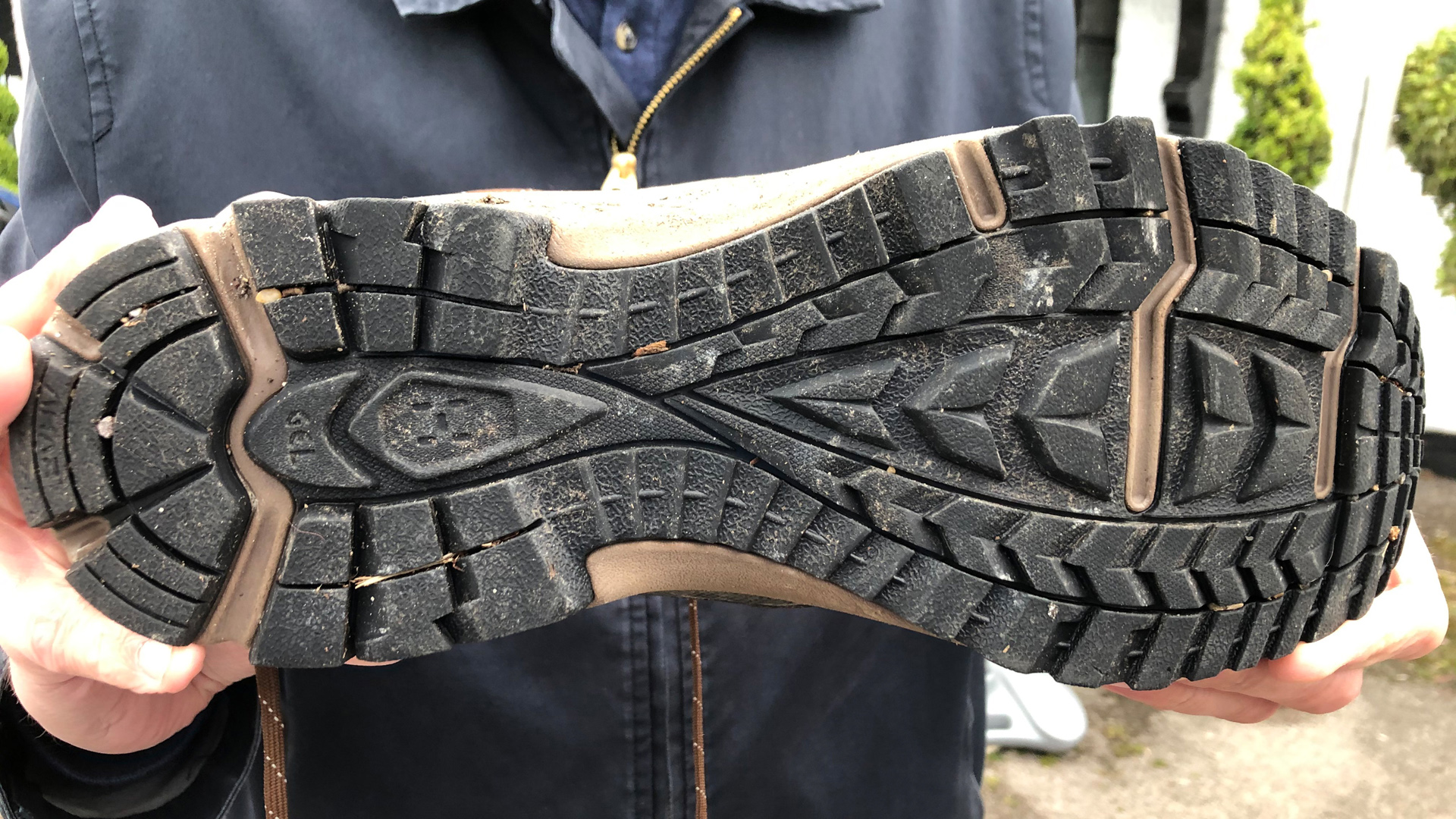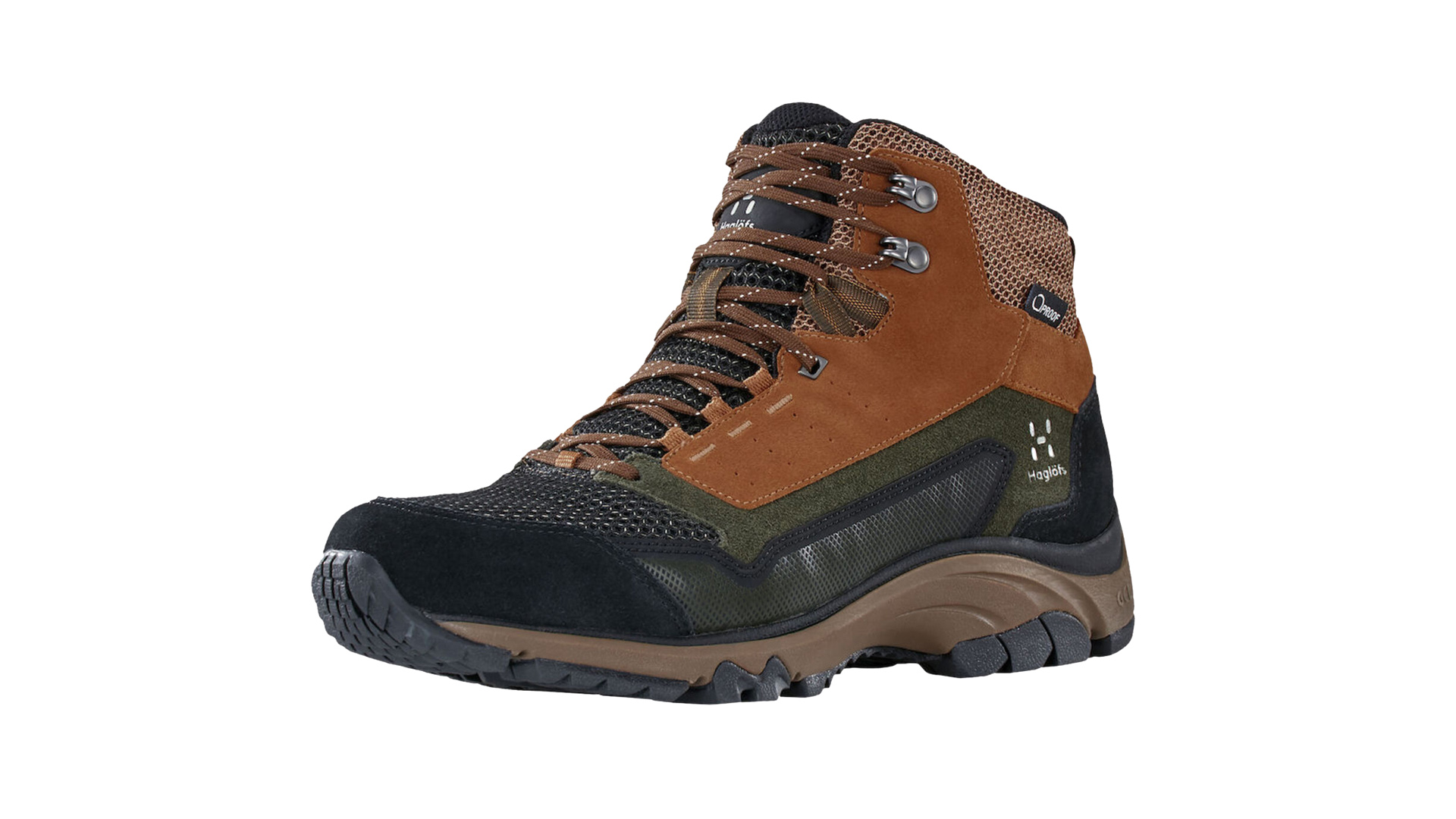Advnture Verdict
A comfortable and capable pair of three-season hiking boots, suitable for casual walks through to reasonably technical treks on most terrain types.
Pros
- +
Light and nimble
- +
Comfortable
- +
Flexible
- +
Breathable
- +
Waterproof
Cons
- -
Not robust enough for technical alpine trails or winter use
- -
Outsole accumulates mud in gloopy conditions
You can trust Advnture
First impressions
A good-looking hiking boot, the Haglöfs Skuta Mid Eco offers instant comfort as soon as you get it out of the box and stick your hoof in it. The leather upper is soft and supple, the molded EVA midsole supplies good cushioning, which is complemented by the use of a gel insert in the heel, and unless you’re extremely prone to hotspots and blisters, there is no real need to wear these boots in before hitting the hills.
As the name suggests, Haglöfs place plenty of stock in the environmental considerations that have gone into making these boots. The Proof Eco membrane is entirely fluorocarbon-free and the premium leather in the upper is sourced from a tannery audited by the Leather Working Group, which endeavors to ensure ethical practices and supply chains are used in the production process of leather goods.
The heel and toe areas have been reinforced with extra suede, to add to the durability, and the tongue is integrated with the use of a gusset, which completes the waterproofing system and prevents gravel, stones and water getting into the boots.
• RRP: £130 (UK) / €150 (EU)
• Gender availability: Male/female versions
• Weight (average, per boot): 240g/8.5oz
• Materials: Leather upper; EVA midsole; waterproof fluorocarbon-free Proof Eco membrane; Asics high-abrasion resistance rubber outsole
• Colors: Oak & deep wood / True black
• Compatibility: 3-season walking on most trails below technical alpine
On the trails
We tested these boots extensively on a number of different terrain types, ranging from muddy moorland to high hilltops and peaks, and wore them in a range of conditions across four seasons. They are not built for mid winter use on serious trails, but can cope with easy grade walks all year round, and are capable of performing well on tougher trails for nine months or more.
Fit
The Skutas felt lightweight and super comfortable right from the very first time we laced them up and set out along a trail. With a mid height collar, they offer good ankle support without feeling restrictive, and will provide a base for carrying loads when you’re backpacking.
Waterproofing
The open mesh design doesn’t fill you with confidence about their waterproofing credentials, but on test the Skutas stood up pretty well to being immersed in water during stream crossings and on coastal tracks.
Durability
With a reinforced rand and a toe cap, the Skutas provide more toe protection than they first appear to. Robust without being overly chunky, they can be worn with hiking shorts or long walking pants, and look good with a pair of jeans at the pub just beyond the trail head too.
Size
The lacing system features an integrated tensioning band across the forefoot, which allows you to get these boots on good and tight. There is plenty of room in the toe box and they walkers with a wide foot, and the level of cushioning is good (how much of this is down to the gel in the heel is hard to tell, but they certainly offer a comfy ride).
There is a lot of flex across the length of these boots, which is good when you want to stay nimble on your feet and travel along the trail at a reasonably fast pace. The bend in the shank is less ideal if you’re tackling exposed crags and peaks, and having to edge around rocks and along ledges.

Grip
The design of the outsole and arrangement of the lugs has been well thought through, providing traction from the front and decent braking control for steep descents in the heel. In soft mud, however, muck does accumulate in the tread, compromising performance.

Author of Caving, Canyoning, Coasteering…, a recently released book about all kinds of outdoor adventures around Britain, Pat has spent 20 years pursuing stories involving boots, bikes, boats, beers and bruises. En route he’s canoed Canada’s Yukon River, climbed Mont Blanc and Kilimanjaro, skied and mountain biked through the Norwegian Alps, run an ultra across the roof of Mauritius, and set short-lived records for trail-running Australia’s highest peaks and New Zealand’s Great Walks. He’s authored walking guides to Devon and Dorset, and once wrote a whole book about Toilets for Lonely Planet. Follow Pat’s escapades on Strava here and Instagram here.

